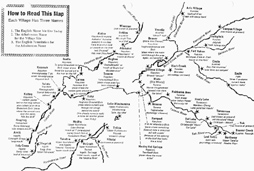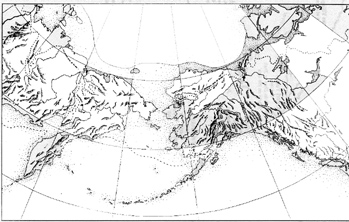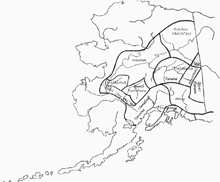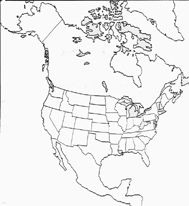Appendix A
Teacher Resource Materials
click on images for a bigger graphic


HANDOUT 2
PRONUNCIATION KEY FOR ALASKAN ATHABASCAN
LANGUAGE NAMES
|
Ahtna Ät'n∂
|
Kutchin Köö chin'(Gwich'in) OR (Gwich in')
|
|
Han Hän
|
Tanaina T∂ nï' n∂(Denaina) OR (D∂ nä' ë
nä)
|
|
Holikachuk Hä'li k∂ chuk
|
Upper Tanana Ta' n∂ nä
|
|
Ingalik In gal' ik(Deg Hit'an) OR (Deg' hit än')
|
Tanana Ta' n∂ nä
|
|
Tanacross Ta' n∂ cräs
|
Upper Kuskokwim Kus' k∂ kwim
|
|
Koyukon Kö y∂ kän
|
|
Pronunciation
Key
|
Ë as in ëven
|
u as in up
|
|
∂ as in "a" in ago
|
I as in hit
|
|
ï as in bïte
|
A as in fat
|
|
ä as in "o" in top
|
E as in pen
|
|
öö as in tool
|
|

click on images for a bigger graphic

Dene' Potlatches
In Minto, Nenana and Tanana
by Charlie and Annie Titus May, 1991
Alaska Native Education
FNSBSD
PURPOSE FOR POTLATCHES
What are potlatches for? There are many different kinds of
potlatches given for different purposes. For example, when a child
has their first catch of fish, rabbits, or any kind of animal the
parents and grandparents put up a potlatch for them so that they will
have good luck for the rest of their life. They have an older person
come up to the child and pass on their life story so that the child
can try to hold onto his luck.
Another kind of potlatch is held for the first catch of the
season. Long ago before there were hunting regulations the Dene' took
animals whenever they were needed and as the seasons allowed. The
first catch of the season was always shared with the entire village.
If the first catch of the season is eaten alone, it is considered to
be bad luck. It is done to respect others in the village. The ribs,
backbone, and brisket are saved for special occasions like
Thanksgiving, New Year, or if someone passes away.
Another type of potlatch is given for a special occasion.
A
potlatch was always held on March 17th. Today this potlatch continues
in Minto. Potlatches were also given to welcome home children who had
gone from the village to go to high school.
The last, but most important potlatch is held when a loved
one passes away and they cannot forget them. So they decide to have
memorial potlatch called "Qhotiit". This is considered to be the most
important potlatch. The one making the potlatch saves many things,
like mooseskin, fur, boots, mittens, hats, blankets, rifles, and many
other items. At the end of the potlatch the gifts are given away. The
strongest part of the potlatch is the love expressed through the
giving of gifts. When the gifts are given, the people are giving
strength to the giver of the gifts. In a way, the person giving the
gifts is giving part of their love and grief for their loved one
away, and helps the healing of the loss. Long ago they used to have
this type of potlatch for 2-3 weeks. Today we have it for 2-3 days.
This type of potlatch is the most important Dene' tradition.
A very special song is composed before the potlatch,
and it
is learned by the people one week before the potlatch. Though the
learning of the song, the people in the village know why the potlatch
is being held. The special song is sung by the maker of the potlatch
while tapping two sticks together. One stick is held in one hand
while tapping it with the other. If the stick being held is tapped on
top, it means that the person that the potlatch is being held for has
passed away. If the stick is tapped from the bottom, it means that
the person is still living. One of the sticks is burned after the
potlatch and another one made when the person is going to make
another potlatch.
In all of the potlatches, at the end of the potlatch
there
is a celebration of dances and games for the honor of the one giving
the potlatch. It is the people's way of saying thank you.
POTLATCH RULES
When the gifts are given away, children do not walk around because of
spiritual beliefs. Right now we are trying to teach that again.
Memorial potlatch is a very respected thing. No alcohol or drugs are
allowed because of the respect. Young girls are not allowed to walk
around in this special potlatch. In all potlatches, you cannot get up
and go. You need to sit and listen to the speeches, because that's
who we learn from. Elders discipline younger people if they do not
listen. Many speeches are made in memorial potlatches. Many years ago
the speeches were actually debates, and speech makers tried to
outsmart each other using inferred meanings and riddles.
The Dene' have very strong spiritual beliefs about animals. Long
ago the people believed the animals to have spirits, and so they are
given alot of respect. The food served in potlatches were put on
table-clothes and if crumbs were dropped on the floor, you could not
step on them. Today, large rolls of paper laid on the floor are used
to put your dishes and food on.
If you are invited to a potlatch, you need to bring your own
utensils, like a plate, bowl, cup, and silverware. That way, we do
not need to use paper materials and waste anything.
The food at the potlatch is always served according to the
movement of the sun around us. The sun moves in a clock-wise motion.
If a server offers you food, you cannot refuse a serving. If you are
full or cannot eat a certain food, you still need to take the food.
You can give it to someone who will eat it, or you can save it to
take home and eat later.
PLANNING A POTLATCH
When someone is planning a potlatch, they never say that they are
going to make a potlatch. They let other people know by hinting, and
letting certain people know to save their berries or the best part of
their catch for a certain time. They never say what the potlatch is
for. If anyone has a question about what the potlatch is for, they
have to go to the potlatch to find out. Then when the singing starts,
the opening song will be sung about the purpose of the potlatch.
Annie's grandfather Chief Thomas made many potlatches in his time.
Introduction
ANE Curriculum
Overview
Unit Overview
Athabascan
Art Sampler
OCR SCANNED MATERIAL